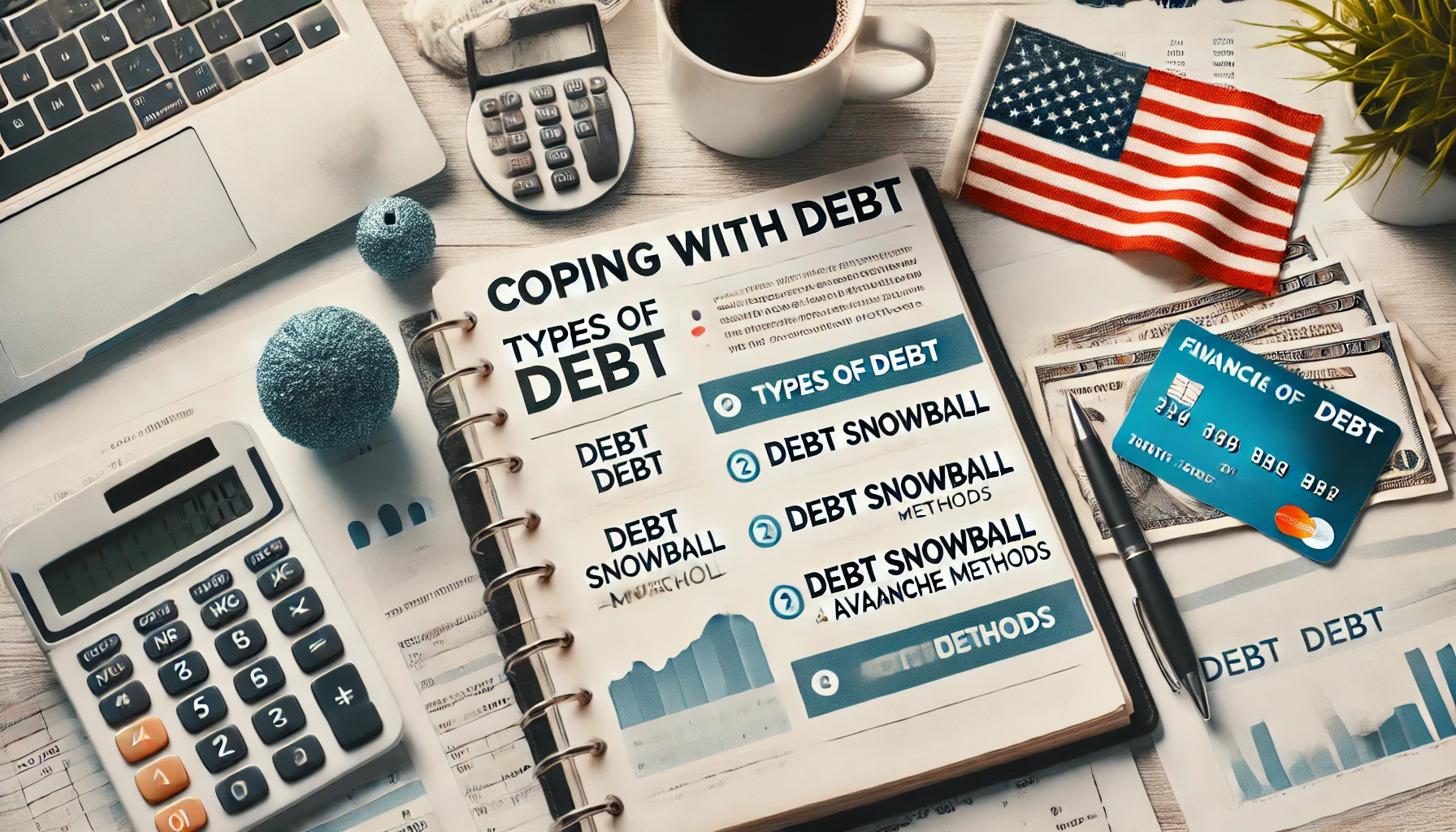Essential Tips for Managing Your Finances in the USA
Essential Tips for Managing Your Finances in the USA – A Practical Guide for Everyone
I. Understanding Your Financial Situation
A. Assessing Your Income
To effectively manage your finances, you first to get a clear picture of your income. Start by listing your current employment salary. This is your primary source of income, but don’t stop there!
- Side gigs and freelance work: If you have any side hustles, whether it’s tutoring, freelance writing, or driving for a rideshare service, include these incomes as well.
- Other sources of income: Don’t forget about investments, rental income, or dividends. Having a diversified income flow can enhance your financial stability.

B. Tracking Your Expenses
Next, it’s crucial to know where your money goes each month.
- Categorizing fixed vs. variable expenses: Fixed expenses include rent or mortgage, insurance, and any loan payments, which generally stay the same. Variable expenses, such as dining out or entertainment, can fluctuate each month.
- Tools and apps for expense tracking: Consider using budgeting apps like Mint, YNAB, or even a simple spreadsheet to help you log and categorize your expenses.
- Creating a monthly spending overview: Once you track your expenses, summarize your spending to see where you can cut back. This can lead to significant improvements in your financial situation.
C. Calculating Your Net Worth
Understanding your net worth is an essential piece of the financial puzzle.
- Understanding assets vs. liabilities: Your assets include savings, property, and investments, while liabilities comprise debts like loans and credit cards.
- How to compile a net worth statement: Simply subtract your total liabilities from your total assets. This will give you a snapshot of your financial health.
- Importance of tracking net worth over time: Regularly checking your net worth can be a motivating factor as you see it grow, helping you stay focused on your financial goals.
II. Creating a Realistic Budget
A. Different Budgeting Methods
Creating a budget can seem overwhelming, but there are several methods you can pick from.
- Zero-based budgeting: In this method, every dollar you earn is assigned a specific purpose, whether for spending, saving, or investing.
- 50/30/20 rule: Allocate 50% of your income to needs, 30% to wants, and 20% to savings or debt repayment.
- Cash envelope system: This is an old-school method where you use cash for specific spending categories. Once the cash is gone, you can’t spend any more in that area.
B. Setting Financial Goals
Clear financial goals give your budget direction.
- Short-term vs. long-term goals: Short-term goals could be saving for a vacation, while long-term goals might include buying a home or retiring comfortably.
- How to prioritize your goals: List your goals, rank them by importance or urgency, and focus on achieving one or two at a time.
- Aligning your budget with your financial goals: Make sure your budget reflects what you prioritize financially. This means allocating more funds to the areas that matter most to you.
C. Sticking to Your Budget
Staying on track with your budget can be challenging, but it’s not impossible.
- Common challenges people face: Impulse spending and unexpected expenses can derail the best-laid plans.
- Strategies to maintain discipline: Set reminders, celebrate small wins, and assess your spending habits regularly. It helps to surround yourself with like-minded individuals who have similar financial goals.
- Adjusting your budget as circumstances change: Life happens, so revisit your budget periodically and tweak it based on any new income or expenses.

III. Coping with Debt
A. Understanding Different Types of Debt
Getting a grip on your debts is crucial for long-term financial health.
- Secured vs. unsecured debt: Secured debts (like mortgages) are backed by assets, while unsecured debts (like credit cards) aren’t.
- Good debt vs. bad debt: Good debts can lead to investments (student loans) while bad debts don’t offer future benefits (high-interest credit card debt).
- The impact of interest rates: Higher interest rates can make certain debts much more costly over time, which is why it’s essential to pay these down promptly.
B. Strategies to Manage Debt
Managing debt is often a balancing act.
- Debt snowball vs. debt avalanche methods: The debt snowball method encourages you to pay off the smallest debts first for psychological wins, while the debt avalanche method focuses on paying off high-interest debts first, saving you money in the long run.
- Negotiating with creditors: Don’t hesitate to reach out to creditors to negotiate your rates or repayment plans. Many are willing to work with you.
- Debt consolidation options: This can simplify your payments and possibly lower interest rates, making it easier to manage what you owe.
C. Prevention and Avoiding Future Debt
Taking proactive measures can stave off future debt.
- Building an emergency fund: Aim for three to six months’ worth of expenses in a easily accessible account for unexpected situations.
- Responsible credit card use: Use credit cards wisely—only for purchases you can afford to pay off each month to avoid accruing interest.
- Benefits of maintaining a good credit score: A higher credit score can save you money in interest rates for loans and help you secure better terms when borrowing.
IV. Saving and Investing Wisely
A. Importance of an Emergency Fund
Having a financial cushion is crucial.
- How much to save: As mentioned earlier, a goal of three to six months of expenses is a smart target.
- Where to keep your emergency fund: Consider a high-yield savings account where your money is accessible but still earns some interest.
- Benefits of having a financial cushion: It offers peace of mind and can prevent you from going into debt during unexpected times.
B. Basics of Investing
Understanding the fundamentals of investing can significantly impact your financial future.
- Different types of investments: Stocks, bonds, and mutual funds each have their pros and cons. Diversifying your investments is key to managing risk.
- The importance of diversification: Don’t put all your eggs in one basket! Spread your investments across different asset classes to lessen risk.
- Understanding risk tolerance: Know how much risk you can take on based on your financial goals and situation. This can guide your investment decisions.
C. Retirement Planning
No one wants to work forever, so planning for retirement should start early.
- Types of retirement accounts: Learn about different options like a 401(k) offered by your employer or IRAs which can have unique tax advantages.
- How to estimate retirement needs: Consider what kind of lifestyle you want in retirement and calculate how much money you’ll need to achieve this.
- Employer contributions and matching: Take full advantage of your employer’s matching contributions—this is essentially free money towards your retirement!

V. Educating Yourself and Seeking Help
A. Continuous Financial Education
Continuously learning about finances can empower you.
- Recommended books and resources: Titles like “The Total Money Makeover” by Dave Ramsey or “Your Money or Your Life” by Vicki Robin can provide valuable insights.
- Online courses and workshops: Websites like Coursera and Khan Academy offer financial literacy courses suited to all levels of expertise.
- Podcasts and financial news for ongoing learning: Tune into financial podcasts for updates and tips that can help you stay informed.
B. Knowing When to Seek Professional Help
Seeking help is a sign of strength, not weakness.
- Types of professionals: Financial advisors and accountants can provide tailored advice based on your financial situation.
- Evaluating the right fit for your needs: Look for specialists who align with your financial goals and values.
- Questions to ask before hiring a professional: Consider asking about their qualifications, fees, and approach to financial planning to ensure they fit your needs.
C. Building a Network of Support
Your journey towards financial health doesn’t have to be a solo endeavor.
- Importance of community resources: Many communities offer free financial education programs through local libraries or community centers.
- Joining financial education groups or workshops: This can help keep you accountable and inspire collective growth.
- Leveraging family and friends for support and accountability: Sharing your financial goals with others can create a support system that helps you stay on track.
Conclusion
Managing your finances is an ongoing process that involves understanding your financial situation, creating a budget, managing debt, saving, investing, and seeking knowledge or professional help. By implementing these essential tips, you can achieve greater financial stability and peace of mind. Remember, it’s never too late to start taking control of your finances!
FAQs
What is the best way to start budgeting?
Start by tracking your income and expenses. Then choose a budgeting method that resonates with you, whether it’s zero-based budgeting or the 50/30/20 rule.
How can I improve my credit score quickly?
Pay down existing debts, make all payment on time, and avoid taking on new debt to see a quicker boost in your score.
Is it better to save or invest my money?
It depends on your financial goals. Saving is essential for short-term goals and emergencies, while investing can provide growth for long-term wealth.
When should I start saving for retirement?
The best time to start saving for retirement was yesterday; the second-best time is now. The earlier you start, the more time your money has to grow.
How do I know if I need a financial advisor?
If your financial situation is complex or you lack confidence in handling investments and retirement planning, it may be beneficial to consult a professional.






